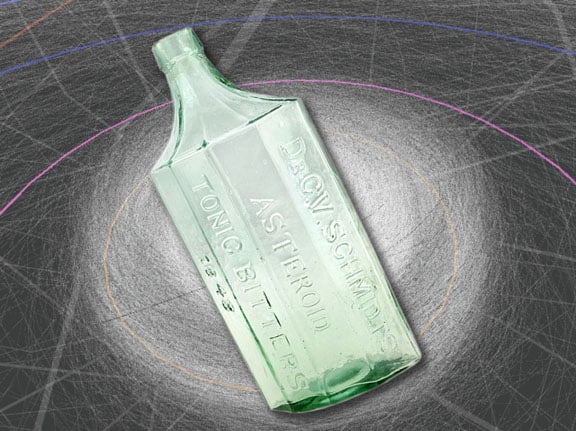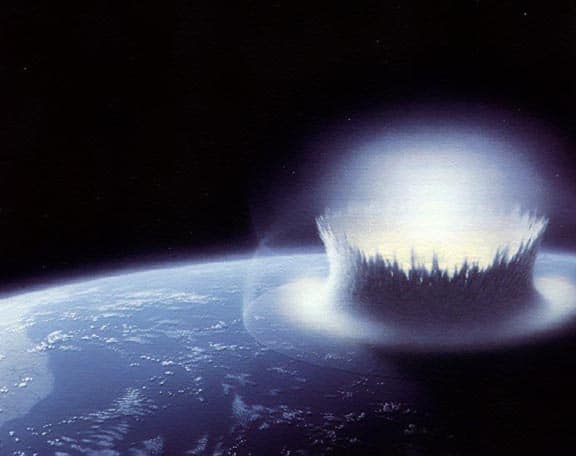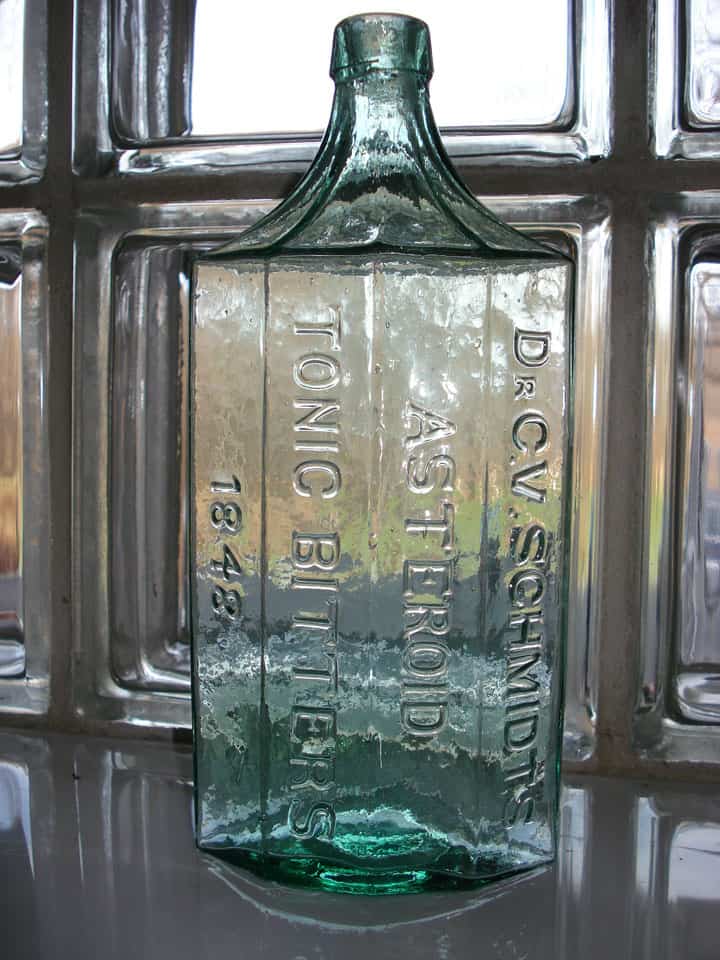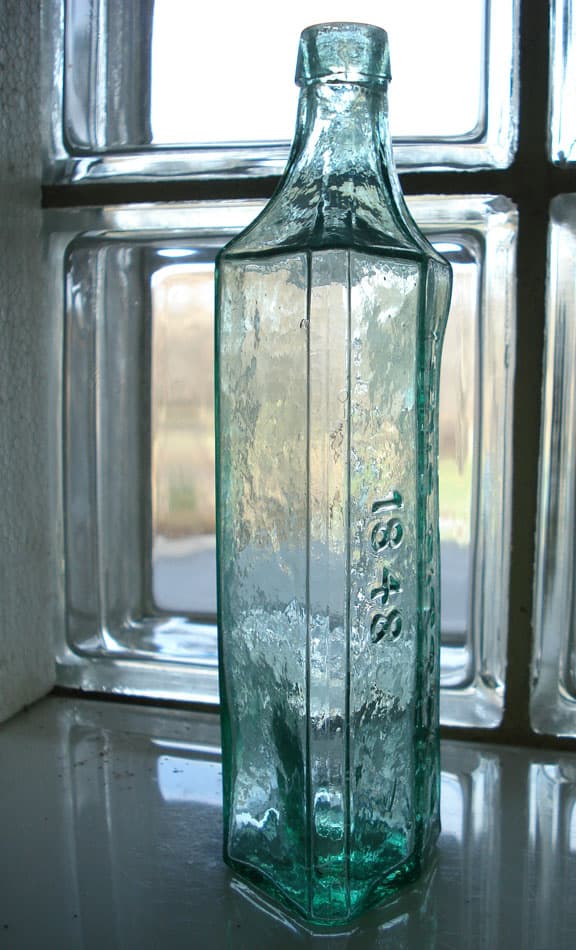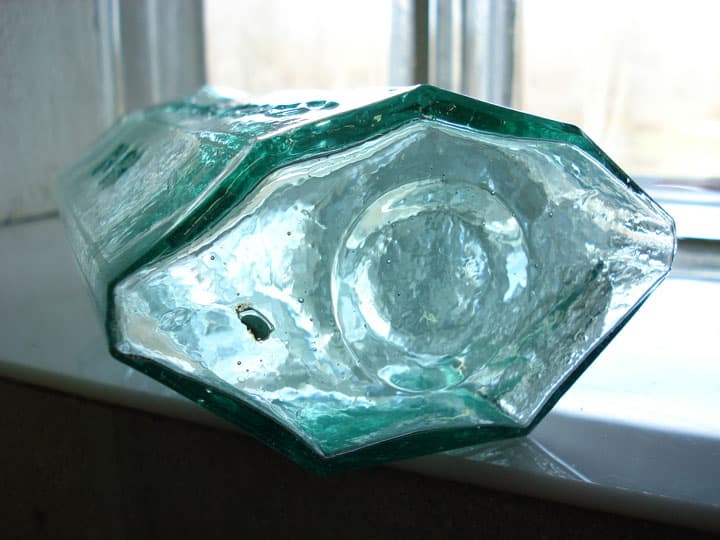Dr. C. V. Schmidt’s Asteroid Tonic Bitters – 1848
06 November 2013 (R•111513) (R•051915) (R•031319)
![]() Jim Hagenbuch over at Glass Works Auctions had this extraordinary, Dr. C. V. Schmidt’s Asteroid Tonic Bitters that I just missed getting in their last auction. Fortunately my bottle friend Jeff Burkhardt (Cedarburg, Wisconsin) was able to add it to his collection. We both admired this bottle when we participated in the great John Feldmann sale and opted to wait until the bottle came up for auction. The Glass Works lot write-up:
Jim Hagenbuch over at Glass Works Auctions had this extraordinary, Dr. C. V. Schmidt’s Asteroid Tonic Bitters that I just missed getting in their last auction. Fortunately my bottle friend Jeff Burkhardt (Cedarburg, Wisconsin) was able to add it to his collection. We both admired this bottle when we participated in the great John Feldmann sale and opted to wait until the bottle came up for auction. The Glass Works lot write-up:
539. “DR. C.V. SCHMIDTS / ASTEROID / TONIC BITTERS / 1848”, (S-54.5), American, ca. 1860 – 1870, greenish aqua, 7-sided, 9”h, smooth base, applied mouth. A 1 1/2” long crack is on a medial rib. Crude highly whittled glass, unusual and attractive form. This is the same bottle that was auctioned in 1990. It was unique than and remains unique now! An impressive looking bitters bottle and the damage is on a side panel.
The Carlyn Ring and W.C. Ham listing in Bitters Bottles Supplement is as follows:
S 54.5 DR. SCHMIDT’S ASTEROID BITTERS
DR. C.V. SCHMIDTS // ASTEROID // TONIC BITTERS // 1848 // f // f // f //
8 3/4 x 4 (2 1/2)
Seven sided (four 1 1/4 inch panels on front and three 1 1/2 inch panels on reverse), Aqua, LTC, Applied mouth, Extremely rare
Acid rain from the heat shock of a large comet or asteroid’s impact with Earth is believed by some to fit the Biblical description of the bitterness produced by the Wormwood Star upon a third of the Earth’s potable water.
This brand is a real tough one as I tried looking up information before. No success. What I do know is that we are talking about a Dr. Charles V. Schmidt located at the corner of 7th and Main in some city in United States. He first concocted his bitters in 1848. When you Google Asteroid Bitters you pull up “Wormwood – Star” on Wikipedia which is interesting. We know that Wormwood is a name used for a number of bitters products. (Read: What are all these Wormwood Bitters?). One of the definitions:
Wormwood
In Greek, is a star, or angel, that appears in the Biblical New Testament Book of Revelation, also called the Apocalypse.
Futurist interpretations
Various scientific scenarios have been theorized on the effects of an asteroid or comet’s collision with Earth. An applicable scenario theorizes a chemical change in the atmosphere due to “heat shock” during entry and/or impact of a large asteroid or comet, reacting oxygen and nitrogen in the atmosphere to produce nitric-acid rain. Acid rain from the heat shock of a large comet or asteroid’s impact with Earth is believed by some to fit the Biblical description of the bitterness produced by the Wormwood Star upon a third of the Earth’s potable water.
Gerardus D. Bouw, Ph. D. in his white paper “Wormwood” theorizes that since the term wormwood refers to a bitter or poisonous plant, specifically “apsinthos, that is, absinthe wormwood” in Revelations 8:11 and that a star falling would likely be an asteroid or comet … the most reasonable scenario being a comet, since they could have a chemical makeup that would make the waters bitter and poisonous and would have to break up by some means, “in order to fall on deep sources of water and rivers, the object cannot be in one piece when it arrives in the atmosphere.”
Did Dr. Schmidt contemplate the Apocalypse when naming his bitters, who knows?
Dr. C. V. Schmidt’s Asteroid Tonic Bitters – 1848
Jeff Burkhardt sent in these gorgeous pictures of his new bottle. Congratulations Jeff.
Here is a stoneware jug with stenciled graphics reading, “Chas Schmidt Asteroid Tonic Bitters, For 7th & Main” courtesy Glen Poch.

